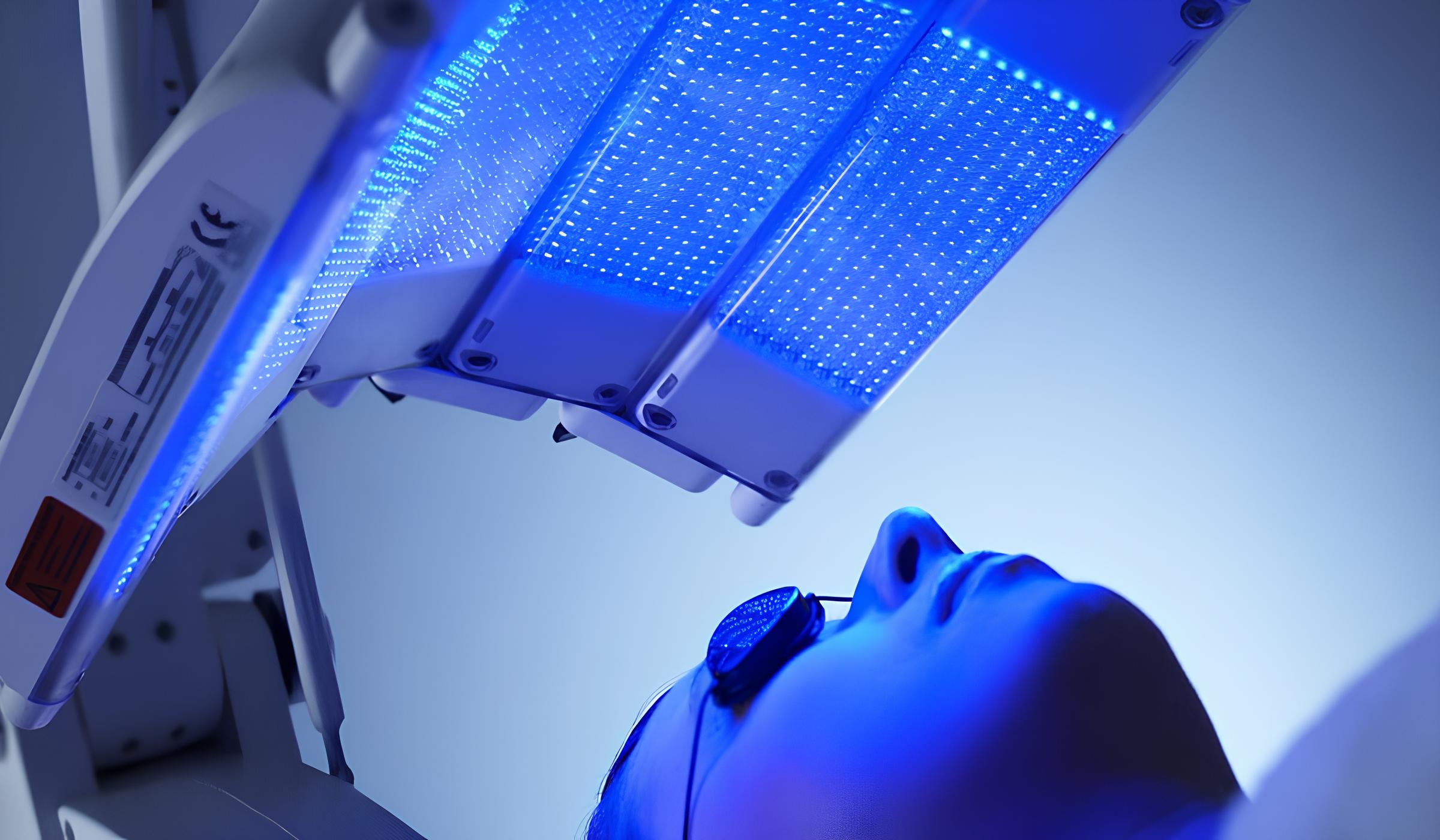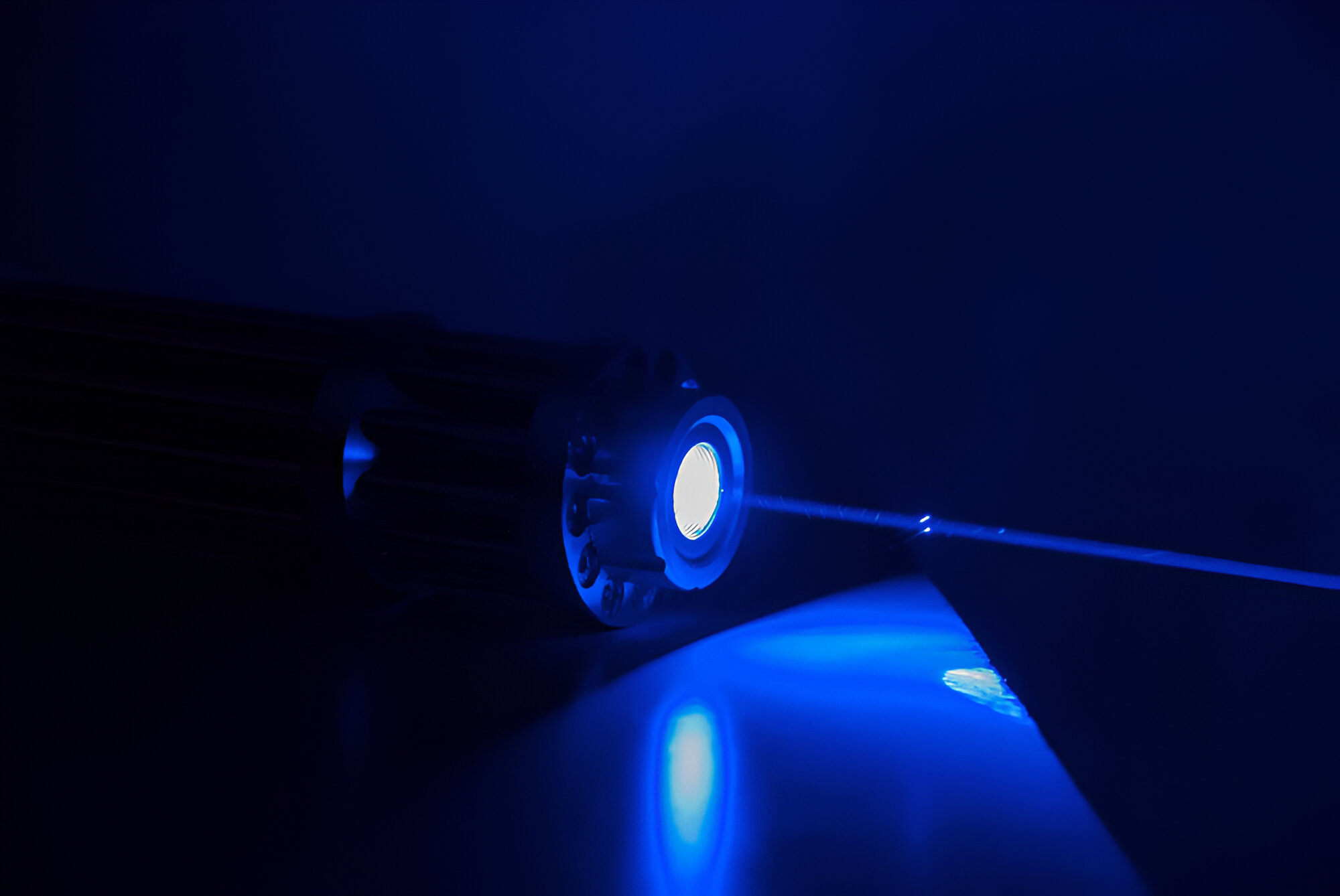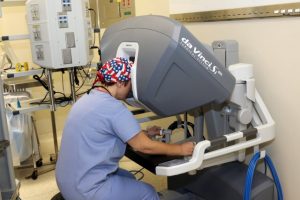Introduction
In today's fast-paced world, technological advancements continue to revolutionize various aspects of our lives, including healthcare. One such innovation that has garnered significant attention is the use of blue light in cancer treatment. The intersection of medical technology and light therapy has opened up new possibilities for combating this complex and challenging disease.
As researchers delve deeper into the potential of blue light, its application in cancer treatment is emerging as a promising area of study. This form of therapy capitalizes on the unique properties of blue light to target cancer cells, offering a potential alternative or complementary approach to traditional treatments such as chemotherapy and radiation.
The utilization of blue light in medical settings represents a remarkable fusion of scientific understanding and technological innovation. It underscores the ongoing quest to harness the power of light in addressing critical health concerns, marking a significant milestone in the evolution of cancer treatment modalities.
Against this backdrop, it is imperative to explore the intricate relationship between blue light and cancer, shedding light on the mechanisms and implications of this novel therapeutic approach. By delving into the science behind blue light and its impact on cancer cells, we can gain a deeper appreciation for the potential benefits and risks associated with this innovative treatment modality.
As we embark on this exploration, it becomes evident that the convergence of medical technology and the enigmatic properties of blue light holds immense promise for the future of cancer treatment. By unraveling the mysteries of this compelling synergy, we stand to gain valuable insights into the evolving landscape of oncology and the transformative potential of cutting-edge medical interventions.
Understanding Blue Light
Blue light, a prominent component of the visible light spectrum, is characterized by its short wavelength and high energy. It is a natural component of sunlight and is also emitted by digital screens, LED lighting, and various electronic devices. This type of light plays a crucial role in regulating our circadian rhythms, influencing our sleep-wake cycles and overall well-being.
From a scientific standpoint, blue light falls within the wavelength range of approximately 380 to 500 nanometers. Its short wavelength gives it a higher energy level compared to other visible light wavelengths, such as red or green light. This unique property enables blue light to penetrate deep into the tissues, making it a subject of interest in various fields, including medicine and technology.
In recent years, the impact of blue light on human health has been a topic of extensive research. While exposure to natural blue light during the day can have positive effects on mood, alertness, and cognitive function, excessive or inappropriate exposure, especially at night, has raised concerns about potential health risks.
Moreover, the prevalence of blue light from digital screens and artificial lighting has prompted discussions about its effects on eye health and sleep patterns. Prolonged exposure to blue light from electronic devices has been linked to digital eye strain and disruptions in the body's natural sleep-wake cycle, primarily due to its influence on the production of melatonin, a hormone that regulates sleep.
In the realm of medical technology, the unique properties of blue light have sparked interest in its potential therapeutic applications, particularly in the field of cancer treatment. Researchers are exploring the ability of blue light to interact with specific biological molecules, potentially influencing cellular processes and paving the way for innovative treatment modalities.
Understanding the fundamental characteristics of blue light is crucial in unraveling its potential impact on human health and its applications in medical interventions. As we delve deeper into the science behind blue light, we gain valuable insights into its multifaceted nature and the diverse ways in which it intersects with our lives, from influencing our biological rhythms to offering new avenues for combating complex diseases such as cancer.
Blue Light and Cancer
Blue light's interaction with biological systems has sparked significant interest in the realm of cancer research. Studies have revealed that blue light possesses unique properties that can influence cellular processes, potentially impacting the behavior of cancer cells. The intricate interplay between blue light and cancer revolves around its ability to modulate specific cellular mechanisms, shedding light on its potential implications for cancer treatment.
At the core of this exploration lies the concept of photobiomodulation, which encompasses the effects of light on biological systems. Within this framework, blue light has been shown to interact with certain molecules within cells, triggering a cascade of biochemical reactions. This phenomenon has prompted researchers to investigate the potential of blue light in altering the behavior of cancer cells, with implications for inhibiting their growth and promoting cellular responses that could aid in treatment strategies.
Moreover, the unique ability of blue light to penetrate tissues has added another dimension to its relevance in cancer research. This deep tissue penetration potential of blue light holds promise for reaching cancerous lesions that may be challenging to access through conventional treatment modalities. By leveraging the penetrating power of blue light, researchers are exploring its capacity to selectively target cancer cells while minimizing damage to surrounding healthy tissues, presenting a compelling avenue for localized and targeted therapeutic interventions.
In addition to its direct impact on cancer cells, blue light's influence on the tumor microenvironment has garnered attention. The tumor microenvironment encompasses the surrounding cellular and molecular milieu in which cancer cells thrive. Blue light's interaction with this complex environment has the potential to modulate factors such as inflammation, angiogenesis, and immune responses, all of which play critical roles in the progression and treatment of cancer.
The evolving understanding of blue light's interaction with cancer cells and the tumor microenvironment underscores the intricate and multifaceted nature of this relationship. As researchers continue to unravel the mechanisms underlying blue light's effects on cancer, the potential for leveraging this knowledge in developing innovative therapeutic approaches becomes increasingly apparent. This ongoing exploration holds promise for expanding the repertoire of tools available for combating cancer, offering new avenues for personalized and targeted interventions that harness the unique properties of blue light.
In essence, the intersection of blue light and cancer represents a captivating frontier in oncology, where the convergence of scientific inquiry and technological innovation holds the potential to reshape the landscape of cancer treatment. The implications of blue light's interaction with cancer cells and the tumor microenvironment extend beyond conventional treatment modalities, opening doors to novel strategies that capitalize on the enigmatic properties of light to confront one of the most formidable health challenges of our time.
Blue Light Therapy in Cancer Treatment
Blue light therapy, also known as photodynamic therapy (PDT), has emerged as a compelling modality in the realm of cancer treatment. This innovative approach leverages the unique properties of blue light to target and eradicate cancer cells, offering a promising avenue for personalized and localized interventions.
At the heart of blue light therapy lies the principle of utilizing a photosensitizing agent that selectively accumulates in cancer cells. This photosensitizer, when activated by specific wavelengths of light, such as blue light, undergoes a photochemical reaction, generating reactive oxygen species (ROS) that induce cellular damage and ultimately lead to the destruction of cancer cells. The ability to precisely activate the photosensitizer with targeted blue light enables the selective destruction of cancerous lesions while sparing healthy tissues, minimizing the adverse effects commonly associated with conventional cancer treatments.
The process of blue light therapy unfolds in a series of meticulously orchestrated steps. First, the photosensitizing agent is administered to the patient, allowing it to accumulate within cancerous tissues over a specified period. Subsequently, the targeted area is exposed to blue light of the appropriate wavelength, activating the photosensitizer and initiating the photochemical reaction. This targeted activation of the photosensitizer sets in motion a cascade of events within the cancer cells, leading to their demise while preserving the surrounding healthy tissues.
The localized and targeted nature of blue light therapy presents a paradigm shift in cancer treatment, offering a tailored approach that minimizes systemic side effects and enhances treatment precision. This personalized aspect of blue light therapy aligns with the broader trend of precision medicine, emphasizing the need to tailor treatments to individual patients based on the unique characteristics of their disease.
Furthermore, the potential for combining blue light therapy with other treatment modalities, such as surgery, radiation therapy, and immunotherapy, opens up new frontiers in multidisciplinary cancer care. The synergistic effects of integrating blue light therapy with established treatment approaches hold promise for enhancing treatment outcomes and expanding the therapeutic arsenal available to oncologists and their patients.
As the scientific understanding of blue light therapy continues to evolve, ongoing research endeavors seek to refine and expand its applications across various types of cancer. The potential for adapting blue light therapy to target diverse malignancies underscores its versatility and adaptability in addressing the complex and heterogeneous nature of cancer.
In essence, blue light therapy represents a transformative approach in the landscape of cancer treatment, offering a blend of precision, efficacy, and minimal invasiveness. By harnessing the unique properties of blue light, this innovative modality stands as a beacon of hope, illuminating the path toward personalized and targeted interventions that hold the potential to redefine the way we combat cancer.
Potential Benefits and Risks
The exploration of blue light therapy in cancer treatment unveils a spectrum of potential benefits and risks that underpin its evolving role in the oncology landscape. Understanding these facets is crucial in navigating the complexities of integrating this innovative modality into clinical practice.
Benefits
Targeted and Localized Treatment
One of the foremost advantages of blue light therapy lies in its ability to deliver targeted and localized treatment to cancerous lesions. By selectively activating the photosensitizer with precise wavelengths of blue light, this modality minimizes damage to surrounding healthy tissues, offering a tailored approach that reduces systemic side effects commonly associated with traditional cancer treatments.
Minimal Invasiveness
Blue light therapy presents a minimally invasive alternative for certain types of cancer, particularly those accessible to light-based interventions. This aspect holds promise for reducing the physical burden on patients and expediting recovery, contributing to a more favorable treatment experience.
Potential for Multidisciplinary Integration
The versatility of blue light therapy opens avenues for integration with other treatment modalities, such as surgery, radiation therapy, and immunotherapy. This multidisciplinary approach has the potential to synergistically enhance treatment outcomes, offering a comprehensive and integrated strategy for combating cancer.
Personalized Treatment Paradigm
The personalized nature of blue light therapy aligns with the broader trend of precision medicine, emphasizing the need to tailor treatments to individual patients based on the unique characteristics of their disease. This individualized approach holds promise for optimizing treatment efficacy and patient outcomes.
Risks
Photosensitivity Reactions
One of the primary risks associated with blue light therapy stems from potential photosensitivity reactions induced by the photosensitizing agent. This can manifest as skin sensitivity to light, necessitating precautions to minimize the risk of adverse reactions following treatment.
Treatment Limitations
The applicability of blue light therapy may be limited by factors such as tumor depth, size, and accessibility. In cases where cancerous lesions are located deep within tissues or in anatomically challenging areas, the effectiveness of blue light therapy may be constrained, necessitating careful patient selection and treatment planning.
Long-Term Efficacy and Safety
As with any evolving therapeutic modality, the long-term efficacy and safety of blue light therapy in diverse cancer types and patient populations warrant ongoing investigation. Robust clinical studies are essential to elucidate the durability of treatment responses and to assess potential long-term effects on patients' overall well-being.
Integration Challenges
The seamless integration of blue light therapy into existing clinical workflows and treatment paradigms poses logistical and operational challenges. From infrastructure requirements to specialized training for healthcare professionals, the successful incorporation of this modality necessitates careful consideration of implementation barriers.
In weighing these potential benefits and risks, it becomes evident that blue light therapy holds immense promise as a transformative approach in cancer treatment. However, the nuanced considerations surrounding its application underscore the need for continued research, clinical refinement, and strategic integration to harness its full potential in advancing oncology care.
Conclusion
The intersection of medical technology and the enigmatic properties of blue light has unveiled a compelling frontier in the realm of cancer treatment. The evolving understanding of blue light's interaction with cancer cells and the tumor microenvironment underscores the multifaceted nature of this relationship, offering a promising avenue for personalized and targeted interventions.
As researchers continue to unravel the mechanisms underlying blue light's effects on cancer, the potential for leveraging this knowledge in developing innovative therapeutic approaches becomes increasingly apparent. Blue light therapy, with its precision, efficacy, and minimal invasiveness, stands as a beacon of hope, illuminating the path toward personalized interventions that hold the potential to redefine the way we combat cancer.
The personalized nature of blue light therapy aligns with the broader trend of precision medicine, emphasizing the need to tailor treatments to individual patients based on the unique characteristics of their disease. This individualized approach holds promise for optimizing treatment efficacy and patient outcomes, reflecting the transformative potential of blue light therapy in the landscape of oncology.
Moreover, the potential for integrating blue light therapy with other treatment modalities opens new frontiers in multidisciplinary cancer care. The synergistic effects of combining blue light therapy with established approaches offer a comprehensive and integrated strategy for enhancing treatment outcomes, underscoring the versatility and adaptability of this innovative modality.
In weighing the potential benefits and risks, it becomes evident that blue light therapy holds immense promise as a transformative approach in cancer treatment. However, the nuanced considerations surrounding its application underscore the need for continued research, clinical refinement, and strategic integration to harness its full potential in advancing oncology care.
As the scientific understanding of blue light therapy continues to evolve, ongoing research endeavors seek to refine and expand its applications across various types of cancer. The potential for adapting blue light therapy to target diverse malignancies underscores its versatility and adaptability in addressing the complex and heterogeneous nature of cancer.
In essence, the convergence of medical technology and the enigmatic properties of blue light represents a remarkable fusion of scientific understanding and technological innovation, marking a significant milestone in the evolution of cancer treatment modalities. The implications of blue light's interaction with cancer cells and the tumor microenvironment extend beyond conventional treatment modalities, opening doors to novel strategies that capitalize on the unique properties of light to confront one of the most formidable health challenges of our time.

























